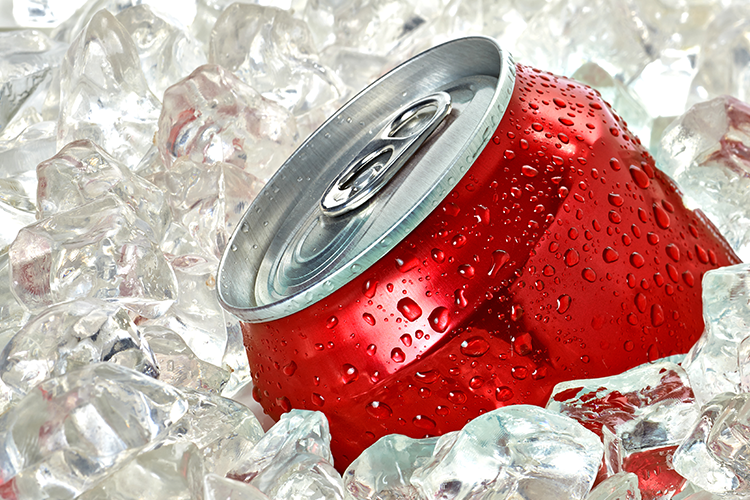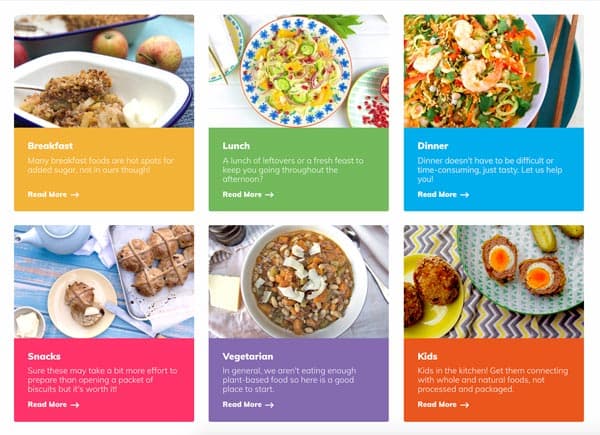Blog
Finding Coke
 On 10 March 2016, Coca-Cola Australia listed recipients of funding – organisations and individuals, as an act for transparency. This was following a similar act undertaken by the U.S. arm of Coca-Cola in 2015, revealing where health, wellbeing and scientific funding was dished out.
On 10 March 2016, Coca-Cola Australia listed recipients of funding – organisations and individuals, as an act for transparency. This was following a similar act undertaken by the U.S. arm of Coca-Cola in 2015, revealing where health, wellbeing and scientific funding was dished out.
Of the $1.7million given to organisations, one third of the recipients were youth related organisations – the demographic with the highest sweetened beverage intake in Australia, and the very group needing exposure to the famous red and white logo the least. Australian youth aged between 14 and 18 have been reported to consume an excessive amount of added sugars, and mostly from energy rich, nutrient poor sources – such as the soft drink. (1)
More than 80% of Australian children and youth consume over 10% of their daily energy intake from free sugars.(5)
Excess added sugars provide nutrient devoid, empty calories. This is at a time when children and adolescents have high demand for nutrients, and therefore nutrient dense food.
The WHO recommends limiting free, or added, sugar intake to 10% of total daily energy with the ideal amount limited to only 5% of total daily energy intake, for health benefits. So how do we work this out?
While the energy needs of an individual will vary depending on their age, sex and levels of activity, dietary intake guidelines typically assume an average adult intake of approximately 8700 kJ. Based on WHO recommendations then, we should limit intake of added/free sugar to 870 kJ, or 435 kJ for health benefits.
Dr Kieron Rooney, Biochemist and Senior Lecturer at the University of Sydney, puts this into context for us:
“870 kJ is approximately 50g (~12 teaspoons) of sugar. Given that one 600 mL bottle of coke contains approximately 64g (16 teaspoons) of sugar, drinking just one bottle of coke, exceeds your threshold for ALL foods and drinks…for the whole day.”
And as we have seen in That Sugar Film, it is easy enough to accumulate added sugar intake amounts, and even exceed the recommended daily limit, WITHOUT adding a bottle of pop into the fray.
A study released in early 2015 revealed that energy received in liquid form, and especially in the form of sugar sweetened beverages, was associated with increased body mass index (BMI) and body fat in children.(10) It concluded that replacing sugar sweetened beverages with water will have long term benefits on childhood adiposity, which will have roll on effects in avoiding development of diabetes, heart disease, learning difficulties, dental caries and liver burden.(5)
Dr Rooney raises the concern of flow on effects of childhood obesity for generations to come.
“Maternal and paternal obesity has been associated with obesity development in their offspring”. If we allow today’s children to become tomorrow’s obese adult, what are the implications for their children? Are we dooming future generations to a life of obesity related ill-health before they are even born?”
Marketing energy dense, nutrient poor food and beverage to youth is pervasive and saturates many advertising mediums. So, despite Coke’s attempt at giving back to the community, additional exposure to the Coca-Cola branding (and conversion to purchase and consume) may be considered irresponsible, doing more harm than good.(6)
It appears, as well, those individuals from lower socioeconomic demographics are likely to consume more soft drinks – 47% compared with 38% from high socioeconomic backgrounds. And who are many recipients of Coke’s funding? You guessed it.
Reaching for research
Coke has also channeled funds to several research projects, including:
- Exercise is Medicine, Exercise and Sports Science Australia
- METEx Energy Balance, University of Queensland
- Health and Wellness, Australian Beverages Council
Dr Jeff Coombs was President of Exercise and Sports Science Australia from 2006 to 2011; at the same time the Exercise is Medicine (EIM) program was formed by the organisation, as part of a global EIM group.
Coca-Cola has funded nearly $250,000 for the Exercise is Medicine (EIM) organisation between 2010 and 2013, which focuses nearly entirely on exercise for improving health, barely mentioning diet.
Dr Coombs is now involved in METEx research at University of Queensland, also funded by Coke. He claims that results of research thus far have not been influenced despite funding by Coke, and if anything, they do not work in the favour of sugar-sweetened beverages.
So, if the funding is not directly impacting the research, could it be doing so indirectly?
EIM, for example, offers a brochure to healthcare practitioners on recommendations for exercise in Indigenous and Torres Strait Islanders with Type 2 Diabetes. Without a doubt, exercise has its place in ameliorating the impact of this condition – but there is no recommendation for how to improve the diet. One of the most important factors in Type 1 or Type 2 diabetes is reducing, if not eliminating, sugar, high GI and high GL foods.
The METEx research is seeking data for the effects of intense exercise on diet, physical activity and body composition in those with metabolic syndrome. This research doesn’t seem too far away from the work of Global Energy Balance Network, which dismantled last year following much controversy over Coke’s influence over its research outcomes, attempting to weaken the link between obesity and soft drinks.
It doesn’t take a rocket scientist to see why Coke would be funding research and bodies involved in sport. Shifting attention from diet, and the well-known negative impact of soft drink on health, to that of physical activity is clever – and these organisations need the corporate money.
But separating diet from health is dangerous, and irresponsible. Not to mention old news.
Coke have framed the debate of energy and sugar intake around the conventional wisdom that calories in and calories out are all that matter in regards to weight maintenance, and therefore health. But it is time to grow up, and move on.
Associating with sporting organisations and exercise focused research bodies further supports this notion that a sugar-laden beverage like Coke ‘fuels’ healthy active lifestyles. Yet it distracts from where Coke is mostly consumed – on the couch or in food courts, not on the running track.
Dr Rooney adds that when sugar sweetened beverage consumption is not used as an immediate energy source, it could arguably be stored by the body for use in later physical activity. But if you are a well-fed individual, as most of us are, you are simply storing fat.
And then there are the funded individuals.
$132,700.60 was given in professional fees, travel and related expenses to 14 named Health Professionals and Scientific Experts, who have worked with Coca-Cola between 2010-2015 in Australia.
Most of those who agreed to have their names listed are involved with Coca-Cola as part of the The Coca-Cola South Pacific Health & Wellness Advisory Council. As part of the council, tasks included:
- ongoing scientific reviews on health issues relating to beverages and promoting health lifestyles;
- involvement in the Coca-Cola South Pacific webinars and conferences;
- advise on consumer education initiatives and materials that promote a healthy and active lifestyle;
- research expertise on framework for Coca-Cola South Pacific research projects and insights; and
- feedback in relation to new product developments and nutrition guidelines and nutrition communications.
Whilst there is claim that the individuals do not necessarily endorse Coca-Cola and its products, can we speculate that advice would weigh heavy on the active lifestyle aspect of healthy living, and veer away from reducing soft drink consumption?
Playing the devil’s advocate, I would like to believe that a majority of benefactors are involved to have a positive impact on health, influencing companies such as Coke to reduce serving sizes and sugar content in products.
Dentist, Dr Nancy Rehrer, on speaking with Stuff.co.nz, said she and other council members would inform Coca-Cola on research often showing the negative impact of high sugar consumption on health.
“My research is informed by peer reviewed publication and I adhere to unbiased scientific principles with rigour and integrity. I have never promoted soft drinks/sports drinks, cakes, cookies, sweets, nor deep fried takeaways for children as a regular part of the daily diet.”
Those not part of the advisory council include William (Bill) Shrapnel, the Sceptical Nutritionist, and Dr Alan Barclay, researcher.
In May last year, following the release of That Sugar Film, Shrapnel remarked on a blog post that he struggled to locate data correlating with the film’s statement of teens consuming a little under 40 grams of sugar in a day.(8) Research has verified that Australians consume an average of 60.3 grams; and youths alone consume on average 58.9 grams per day (with a standard deviation of 35.1 grams) of added sugar. Not total, but added.(3;5)
And a majority of this comes from sugar-sweetened beverages.
He further claims that a teaspoon of sugar is 5 grams. We prefer to use the measure employed by the WHO – being 4.2 grams per day.
And then we have Dr Alan Barclay, co-author of the controversial paper, The Australian Paradox: A Substantial Decline in Sugars Intake over the Same Timeframe that Overweight and Obesity Have Increased.(2)
This research saw Dr Barclay, along with fellow research Professor Jennie Brand -Miller, was caught up in a claim of misconduct. Whilst acquitted, the issue arose out of results showing a rise in obesity in Australia, yet a decrease in sugar consumption.
In the final sentence of the paper, Dr Barclay specifically states:
“The findings challenge the implicit assumption that taxes and other measures to reduce intake of soft drinks will be an effective strategy in global efforts to reduce obesity.”
And this conclusion was used by a QLD senator to argue against a sugar tax in Australia. Yet we know that attitude is contrary to the beliefs of independent groups like the WHO.
But apparently, sugar isn’t the problem for Australia’s rise in obesity (though the U.S. and U.K. prove positive correlations between the two). Better yet, there is apparently no use for a sugar tax. Coke must have been thrilled!
Unless they were anticipating such an outcome?
Things start to feel a little suspicious when, in 2014, Shrapnel, and fellow Coke funding recipient Gina Levy, updated this paper.(4) They focused on sales data, noting an increase of non-sugar water-based beverages, but an apparent decline for sugar sweetened beverages.
The operative word here being “apparent”. Keen observers should note that the sales data is presented as per capita. This is where the researchers take the absolute number of drinks sold and average it over the entire population. A follow up letter to the editor by Dr Rooney on the Levy and Shrapnel paper identifies that whist non-sugar beverage sales grew faster than sugar-sweetened beverages, the sugar laden drink sales still grew. It was just that the annual growth rate of sugar-sweetened beverages was smaller than that of the growth rate of the population, thus impacting the results.(7)
Since, Professor Brand-Miller has admitted the original paradox study may be flawed. There goes the Australian Beverage Council’s (also included on Coke’s funding list) ammunition to separate sugar-sweetened drink consumption from Australia’s rise in obesity.
It is necessary to consider the source and quality of the data utilised in the paradox study. The Food and Agriculture Organisation (FAO) collated sugar consumption data in Australia at that point, and this data was used in the study. The Australian Bureau of Statistics gave away this activity in 1999, and the FAO were not actively collecting new data; instead basing proposed sugar intake statistic on an algorithm.
May we also understand that a rise in obesity doesn’t necessarily happen within several years. This is possibly an epidemic brewing for decades, and now really manifesting in children and youth of today.
The unknown
There is, however, fees equating to an approximate aggregate amount of $2060.00 provided to individuals who have declined to have their names listed. This seems odd! Why would one NOT want their name associated with the biggest soft drink company in the world?
Always question
May we always have a healthy dose of scepticism. Acquiring data on nutritional intake and associating this with disease or wellness is a notoriously difficult undertaking. However, understanding funding sources, and its possible influence, is needed – as corporate funding of research is not going anywhere anytime soon.
References:
- ABS 2015, Consumption Of Sweetened Beverages, Australian Bureau Of Statistics, viewed March 2016, <http://www.abs.gov.au/ausstats/abs@.nsf/Lookup/4364.0.55.007main+features7102011-12>
- Barclay, AW & Brand-Miller, J 2011, ‘The Australian paradox: a substantial decline in sugars intake over the same timeframe that overweight and obesity have increased’, Nutrients, vol. 3, no. 4, pp. 491-504
- Lei, L Rangan, A Flood, VM & Louie, JC 2016, ‘Dietary intake and food sources of added sugar in the Australian population’, British Journal of Nutrition, vol. 115, no. 5, pp. 868-877 10p
- Levy, GS & Shrapnel, WS 2014, ‘Quenching Australia’s thirst: A trend analysis of water-based beverage sales from 1997 to 2011’, Nutrition & Dietetics, vol. 71, no. 3, pp. 193-200
- Louie, JC Moshtaghian, H Rangan, AM Flood, VM & Gill, TP 2015, Intake and sources of added sugars among Australian children and adolescents, European Journal of Nutrition (Epub ahead of print)
- Robert Johnson Wood Foundation 2011, Food and Beverage Marketing to Adolescents: An Environment at Odds with Good Health, viewed March 2016, <http://www.rwjf.org/en/library/research/2011/04/food-and-beverage-marketing-to-children-and-adolescents.html>
- Rooney, K 2016, Not quite quenching Australia’s thirst: A critique of the trend analysis of water-based beverage sales from 1997 to 2011, Nutrition & Dietetics, vol. 73, pp. 112-113
- Shrapnel, B 2015, Modern Diet Myth No. 10: Australian teenagers eat 40 teaspoons of sugar a day, The Sceptical Nutritionist, viewed March 2016 <http://scepticalnutritionist.com.au/?p=1973#more-1973>
- Zheng, M Allman-Farinelli, M Heitmann, BL Toelle, B Marks, G Cowell, C & Rangan, A 2015, ‘Liquid versus solid energy intake in relation to body composition among Australian children’, Journal of Human Nutrition & Dietetics, vol. 28, pp. 70-79 10p











